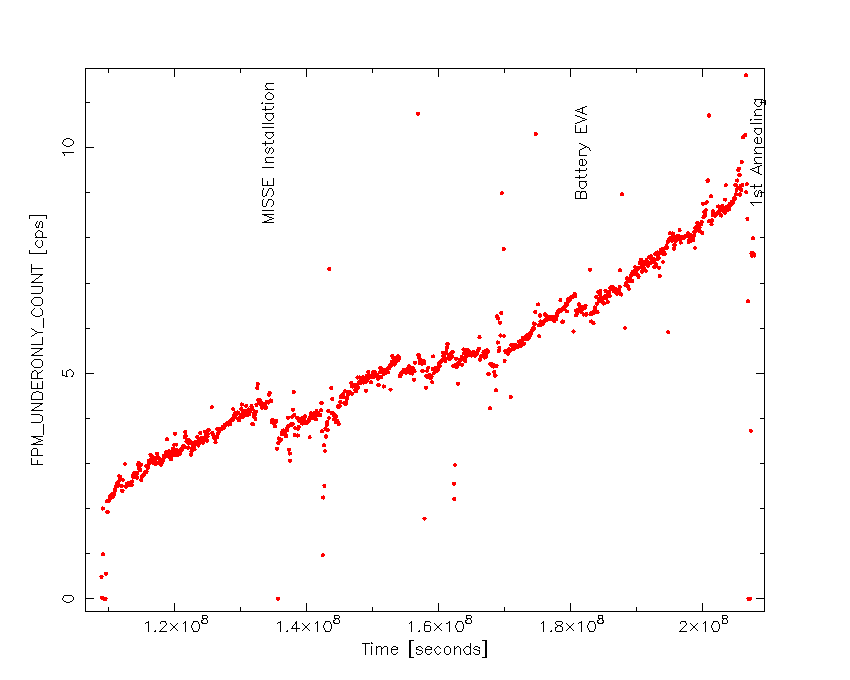NICER / ISS Science Nugget
for August 6, 2020
NICER Gets a Heat Treatment
Since NICER has been on orbit, radiation damage has slowly increased the dark current of its Silicon Drift Detectors (SDDs). The increased dark current has not degraded NICER's science output but, in anticipation of mission extensions, we have begun exploring mitigations.
Radiation damage in the SDDs is due to trapped protons in the South Atlantic Anomaly (SAA), and manifests itself primarily in the form of dislocations within the crystal structure of the SDD’s silicon. It is commonly known that heating the devices, or annealing, has the effect of moving the dislocations toward the crystal boundaries, where they disappear. In nominal operation, NICER's SDDs are individually cooled to -55 C using thermoelectric coolers (TECs). Turning off an SDD’s TEC will cause it to warm to about 0-5 C during normal NICER operations. With 52 functioning SDDs on NICER, disabling one individual SDD temporarily results in a less than 2% decrease in NICER's overall effective area and throughput.
With this in mind, we have begun an annealing program that steps through one SDD at a time. For approximately 1 week, an SDD’s TEC is turned off while all the others continue operating. During that week, some of the radiation damage suffered by that device will be annealed. The following week, the annealed SDD is brought back on-line while another SDD is annealed. Thus, in 1 year, each SDD will get about 1 week of elevated (0-5 C) annealing. Initial evidence shows that 1 week of annealing should remove 6-9 months of radiation damage-induced dark current.

Figure 1: One of the housekeeping parameters for a NICER SDD provides a measure of total charge accumulation. This charge is due to signals from X-rays that we are studying, as well as cosmic ray hits, optical light loading, and dark current. In this figure, the HK parameter FPM_UNDERONLY_COUNT for one detector is shown as a function of time since the beginning of the mission. We limited the data to that only collected during orbit night to maximize our sensitivity to thermal dark current. In this plot, we see a steady growth in dark current as a function of time. The first large discontinuity is due to NICER being stowed with preheaters on and detector power down for several days to support MISSE installation. There are several smaller jumps during other MISSE operations that required NICER to power down. The last discontinuity is due to a 5-day annealing test. After that test, the SDD's dark current returned to a level it had roughly 6 months earlier.

Figure 2: Same as Figure 1, but zoomed in on the most recent annealing test.
<< Previous
Main Index
Next >>